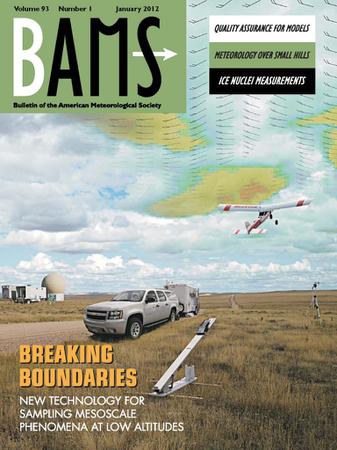美国野火空气质量多机构集合预测:达成社区预警共识
IF 5.9
1区 地球科学
Q1 METEOROLOGY & ATMOSPHERIC SCIENCES
引用次数: 0
摘要
摘要 野火对北美地区的人类健康和财产构成了越来越大的风险。由于火灾的排放、传播和化学转化存在很大的不确定性,因此准确预测野火事件期间的空气质量仍然具有挑战性,这阻碍了我们发布有效预警以保护公众健康和福利的集体能力。在此,我们利用美国三个联邦机构(海洋大气局、美国国家航空航天局和海军)的各种野火烟雾预测,提出了一种新的实时危险空气质量集合系统(HAQES)。与单个模型相比,HAQES 集合预报大大提高了预报精度。为进一步提高预报性能,引入并测试了加权集合预报方法。与未加权的集合平均值相比,多线性回归加权集合将主要火灾区域的分数偏差降低了 34%,误报率降低了 72%,命中率提高了 17%。最后,我们使用量化回归和加权回归方法改进了加权集合,以加强对极端空气质量事件的预测。与集合平均值相比,高级加权集合将 PM2.5 超标的命中率提高了 55%。我们的研究结果为开发野火空气质量的高级集合预测方法提供了启示,为加强决策支持以保护公众健康提供了一种实用方法。本文章由计算机程序翻译,如有差异,请以英文原文为准。
Multi-Agency Ensemble Forecast of Wildfire Air Quality in the United States: Toward Community Consensus of Early Warning
Abstract Wildfires pose increasing risks to human health and properties in North America. Due to large uncertainties in fire emission, transport, and chemical transformation, it remains challenging to accurately predict air quality during wildfire events, hindering our collective capability to issue effective early warnings to protect public health and welfare. Here we present a new real-time Hazardous Air Quality Ensemble System (HAQES) by leveraging various wildfire smoke forecasts from three U.S. federal agencies (NOAA, NASA, and Navy). Compared to individual models, the HAQES ensemble forecast significantly enhances forecast accuracy. To further enhance forecasting performance, a weighted ensemble forecast approach was introduced and tested. Compared to the unweighted ensemble mean, the multilinear regression weighted ensemble reduced fractional bias by 34% in the major fire regions, false alarm rate by 72%, and increased hit rate by 17%. Finally, we improved the weighted ensemble using quantile regression and weighted regression methods to enhance the forecast of extreme air quality events. The advanced weighted ensemble increased the PM2.5 exceedance hit rate by 55% compared to the ensemble mean. Our findings provide insights into the development of advanced ensemble forecast methods for wildfire air quality, offering a practical way to enhance decision-making support to protect public health.
求助全文
通过发布文献求助,成功后即可免费获取论文全文。
去求助
来源期刊
CiteScore
9.80
自引率
6.20%
发文量
231
审稿时长
6-12 weeks
期刊介绍:
The Bulletin of the American Meteorological Society (BAMS) is the flagship magazine of AMS and publishes articles of interest and significance for the weather, water, and climate community as well as news, editorials, and reviews for AMS members.

 求助内容:
求助内容: 应助结果提醒方式:
应助结果提醒方式:


